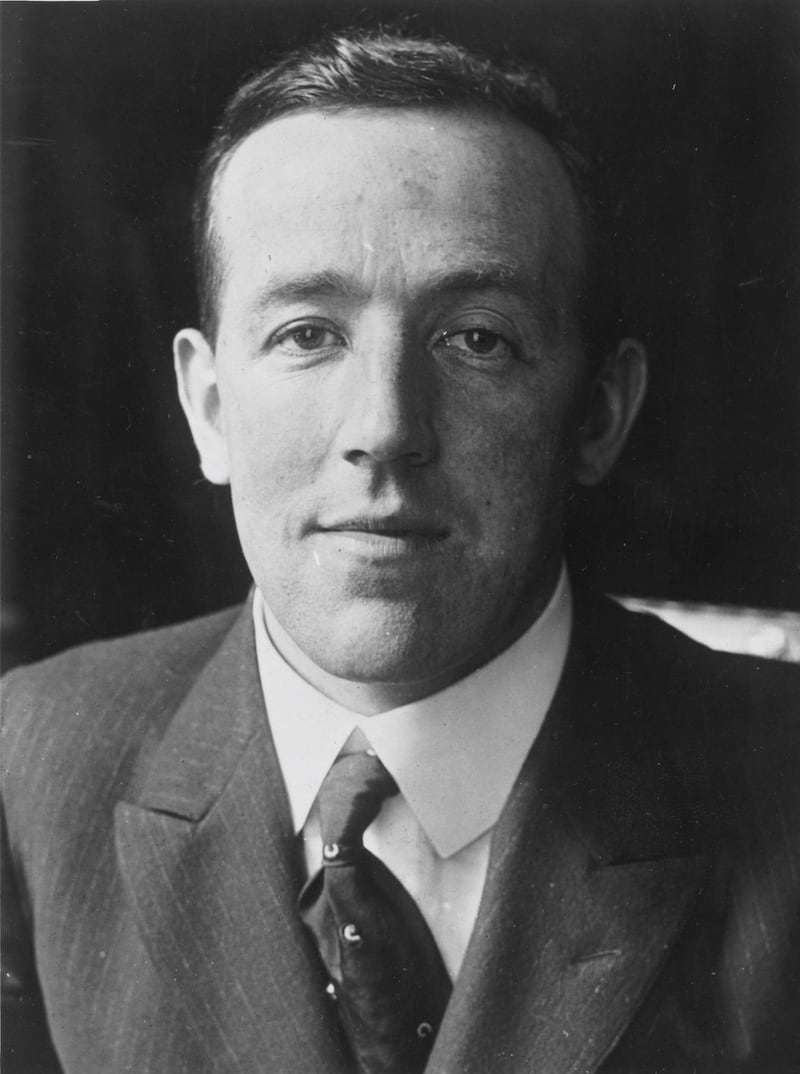This article is part of the Irish Times Century project. For more on Ireland in 1922, click here.
Harry Boland died on August 1st, 1922. On his passing, Kathleen O'Connell, secretary to Éamon de Valera, observed the latter "looked crushed and broken. He lost his most faithful friend."
It was just one genuinely emotional reaction stirred in much of Boland’s contemporaries on both sides of the Civil War divide. Much of Boland’s appeal was due to him being known as a genial, good-humoured individual. He was also a masterful political organiser and charismatic leader within the Irish revolutionary movement.
Boland was born into a Dublin family in 1887. His father, James, was a prominent Fenian and GAA official, as well as an enormous influence on his son. Boland became a major participant in such organisations as the GAA, the Gaelic League, the Volunteers and, of course, the Irish Republican Brotherhood.
Along with his two older brothers and sister Kathleen, Harry took part in the Easter Rising and thereafter was imprisoned in England. He became a key figure in the rebuilding of the national movement, becoming close to Michael Collins. Boland joined de Valera in his travels across the United States for much of the War of Independence, organising nearly every aspect of the American tour.
Tensions arose in Boland's friendship with Collins, with both men's rivalry for the heart of Kitty Kiernan, which has remained a point of public fascination, mainly due to the 1997 film biopic, Michael Collins. In truth, their true break came over their respective stances on the Anglo-Irish Treaty. While anti-Treaty, Boland became a key player in trying to mend the split. Yet at the outbreak of the Civil War, Boland became quartermaster of the anti-Treaty IRA. Boland took a direct part in fighting in both Dublin and Blessington. In the final days of July 1922, Boland ventured to the seaside town of Skerries in Dublin, possibly attempting to get passage to his familiar environs to the United States to seek arms and finance from the republican support base across the Atlantic.
Death
Neil Jordan's 1997 film features Boland, played by Aidan Quinn, inaccurately being shot to death while attempting to flee the capital through the River Liffey. The true circumstances of his death were different, but similarly inglorious. Boland was mortally wounded when shot during an attempted arrest by National Army soldiers in Skerries' Grand Hotel. He lingered near death in Dublin's St Vincent's hospital for two days.

Boland told his sister Kathleen the man who shot him was a friend with whom he was imprisoned with after the Easter Rising, but refused to say the man’s name. Collins wrote to Kiernan shortly beforehand, having passed the hospital and noting the crowd outside. He lamented, “My mind went in to him, Harry lying there dead and I thought of the times together . . . I had sent a wreath . . . I suppose they would return it torn up.”
Boland's funeral was a major procession through Dublin city, an extraordinary turnout for one of the most well-liked figures of the revolutionary movement. The artist Jack Yeats, himself not lacking in republican sympathies, would depict the funeral in two paintings.
His brother Gerard Boland was a Fianna Fáil TD, who served as minister in several government cabinets. Gerald's son, Kevin, was also later a Fianna Fáil TD and government minister. Kevin famously resigned in solidarity with those dismissed from Jack Lynch's government over the events of the Arms Trial. After a failed attempt at creating a new party, Kevin lost his seat at the 1981 general election and retired from public life, bringing an end to a political dynasty that had considerable roots in the cause of Irish independence.








